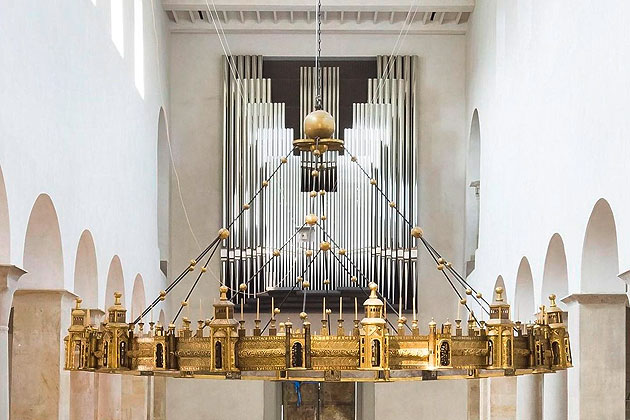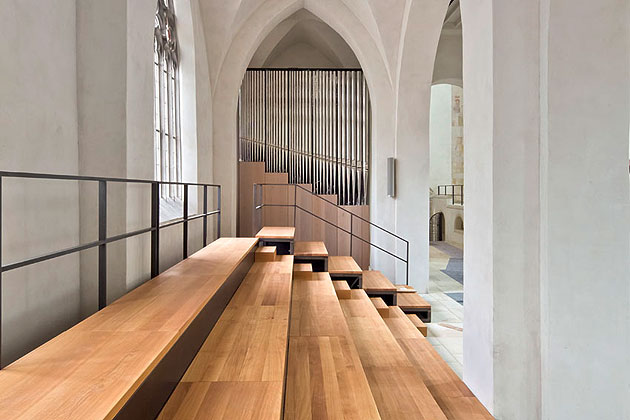External appearance of the cathedral organs
The newly renovated cathedral is home to a main organ and a choir organ. The design of both instruments blends with the décor of the rest of the cathedral. The original design for the exterior of both organs was conceived by Prof. Johannes Schilling and developed in detail in consultation with the organ builder and the cathedral musicians.
Existing pipes incorporated into main organ
The design for the main organ, which included incorporating a large percentage of the existing material from the pipes and windchest, presented a big challenge in designing the Positive. This “small” organ behind the organist is not really small at all in a “full-sized” cathedral organ; with external measurements of 3.7-m height, 2.9-m width and 1.6-m depth and weighing in at over two tonnes, it is more of a complementary counter-organ. By extending the display pipes on the Positive, this was successfully integrated visually into the main organ case. The result is a staggered arrangement of pipe sections, resembling a series of flaps in a theatre set. This gives the observer a different view of the instrument from every angle. It was also decided to deliberately dispense with any visible framework of the main organ. Instead the gleaming silver pipes rest on the charcoal-grey supporting structure, almost giving the impression that the organ is floating, despite its enormous size at over 8-m high and 6-m wide with a visible depth of 4 m.
Cube-shaped choir organ
The design for the choir organ responds to elements in its surroundings. The supporting structure is made of oiled oak, as is the seating in the Cathedral. Its form on the west side reflects the steps rising up to the chancel platform. The overall shape of the organ is a cube that does not touch any of the walls of the chapel in which it stands. The two sides visible to visitors give a front view of pewter pipes, the rear ones are completed in oak using the frame-filling technique . The stabilisation frame of the pipe display is not visible; a structure is only formed by the profile of the lips. On the west side, these follow the newel and on the south side they give an almost “classical” symmetrical picture. The upper side of the organ is finished with a slim steel plate, so that the pipes can “soar” up high.“
Organs are visually connected
The main organ and the choir organ are connected visually by the cathedral’s new chancel platform. The colour of the bottom steps of the platform ties in with that of the supporting structure of the main organ, and the platform steps are made from the same wood as the supporting structure of the choir organ.



